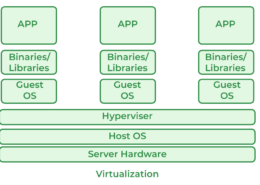Advantages of Serverless Computing: Cost Efficiency: Serverless architectures often follow a pay-per-use model, where you only pay for the actual resources consumed. This can lead to cost savings compared to provisioning and maintaining servers in a traditional setup. Scalability and Elasticity: SerRead more
Advantages of Serverless Computing:
- Cost Efficiency:
- Serverless architectures often follow a pay-per-use model, where you only pay for the actual resources consumed. This can lead to cost savings compared to provisioning and maintaining servers in a traditional setup.
- Scalability and Elasticity:
- Serverless platforms automatically handle scaling based on workload. They can scale up or down in real-time, ensuring optimal performance without manual intervention.
- Simplified Operations:
- Developers can focus more on writing code and less on managing infrastructure. Serverless providers handle maintenance tasks such as patching, scaling, and availability.
- Faster Time to Market:
- Developers can deploy code faster because they don’t need to manage server provisioning or deployment environments. This agility can accelerate the development and release cycles.
- Automatic High Availability:
- Serverless architectures are designed for high availability. Providers manage the underlying infrastructure, reducing the risk of downtime due to hardware failures.
Potential Drawbacks of Serverless Computing:
- Vendor Lock-in:
- Adopting serverless often ties you to a specific cloud provider’s ecosystem. Portability of applications can be limited, making it harder to switch providers.
- Cold Start Latency:
- Serverless functions may experience latency when they’re invoked for the first time or after being idle for a while. This “cold start” can impact performance for latency-sensitive applications.
- Monitoring and Debugging Complexity:
- Serverless applications can be harder to monitor and debug compared to traditional architectures, especially when functions are distributed across different services.
- Resource Limitations:
- Serverless platforms impose limits on resources like memory, execution time, and concurrent executions per function. Applications must be designed to operate within these constraints.
- Potential Cost Overruns:
- While serverless can be cost-effective for sporadic workloads, continuous high-volume usage can lead to unexpected costs. Careful monitoring and optimization are necessary to prevent cost overruns.


Cybersecurity is crucial in today's digital world due to several reasons: 1. Protection of Data: With vast amounts of personal, financial, and organizational data stored online, cybersecurity ensures that sensitive information remains confidential and secure from unauthorized access, theft, or manipRead more
Cybersecurity is crucial in today’s digital world due to several reasons:
See less1. Protection of Data: With vast amounts of personal, financial, and organizational data stored online, cybersecurity ensures that sensitive information remains confidential and secure from unauthorized access, theft, or manipulation.
2. Prevention of Cyber Attacks: As cyber threats evolve and become more sophisticated, cybersecurity measures help in detecting, preventing, and mitigating various types of cyber attacks such as malware, phishing, ransomware, and denial-of-service (DoS) attacks. attacks can disrupt operations, steal data, and cause financial losses.
3. Protection of Infrastructure: Critical infrastructure sectors such as energy, transportation, and healthcare depend on interconnected systems and networks. Cybersecurity helps in securing these infrastructures from cyber threats that could potentially impact public safety and national security.
4. Privacy and Trust: Maintaining cybersecurity fosters trust among users and customers. It assures individuals that their personal information is handled responsibly and securely, enhancing confidence in digital transactions and online services.
5. Legal Requirements: Many industries are subject to regulatory requirements and standards related to data protection and cybersecurity. Adhering to these regulations not only helps in avoiding legal repercussions but also demonstrates commitment to protecting stakeholders’ information.
In essence, cybersecurity is vital for safeguarding digital assets, ensuring business resilience, maintaining trust, and upholding privacy in an increasingly interconnected and digitalized world.